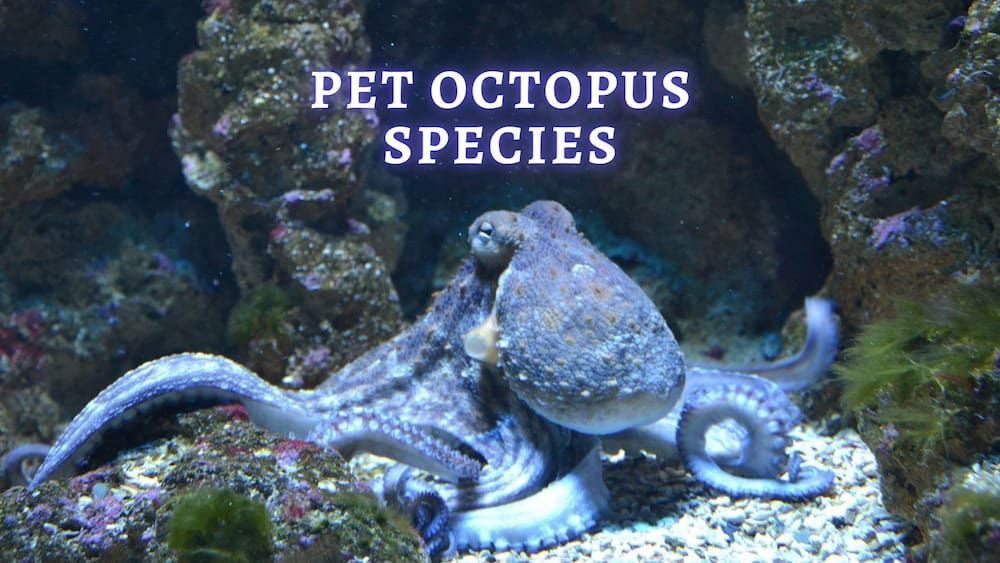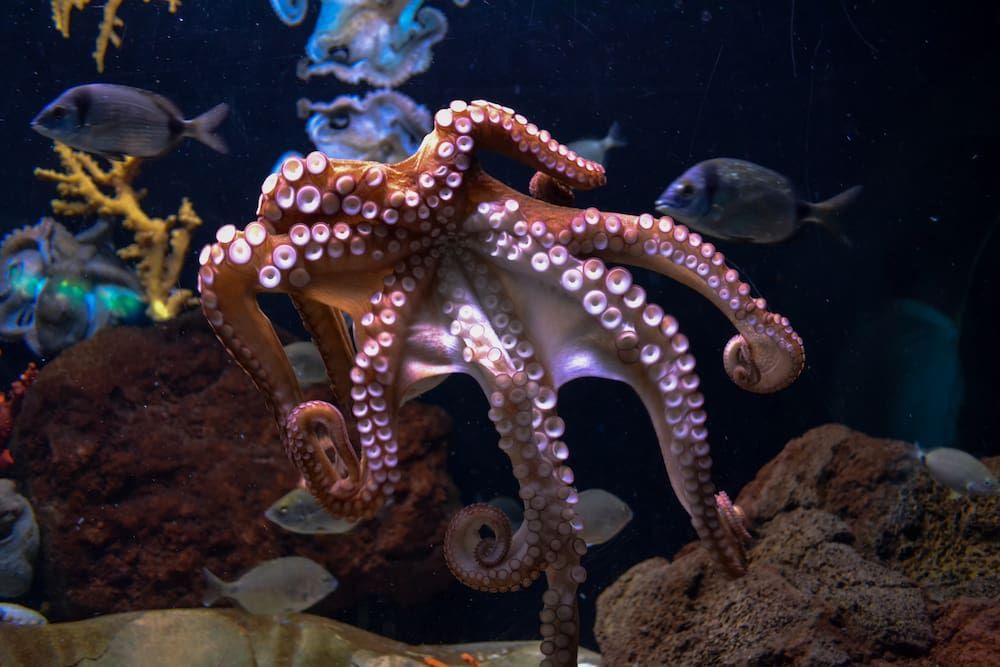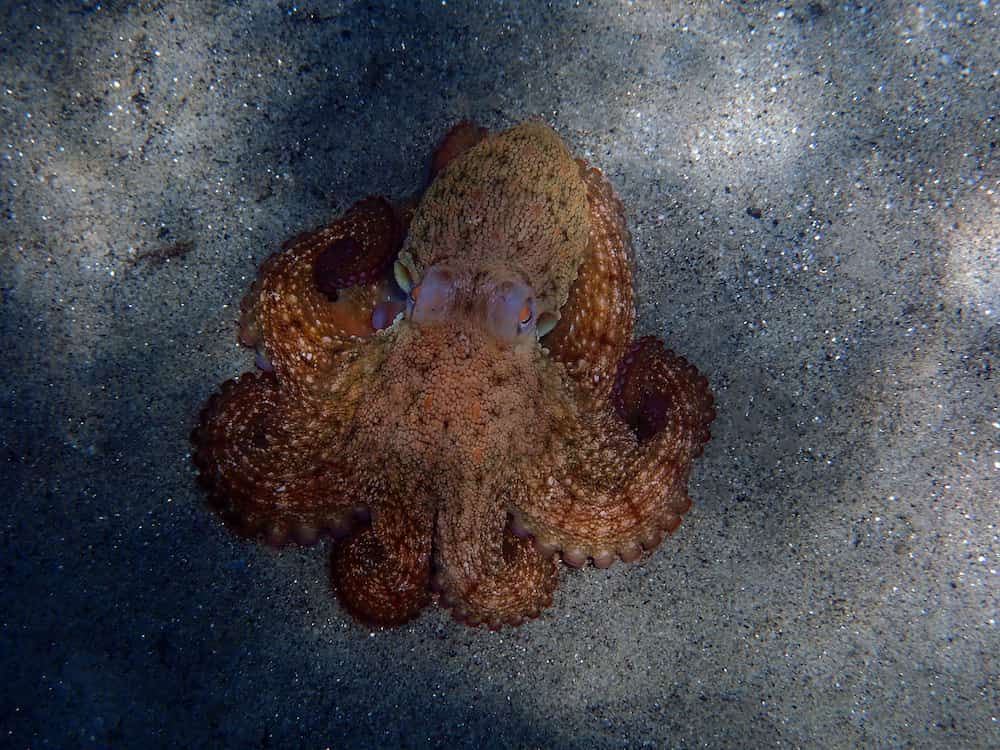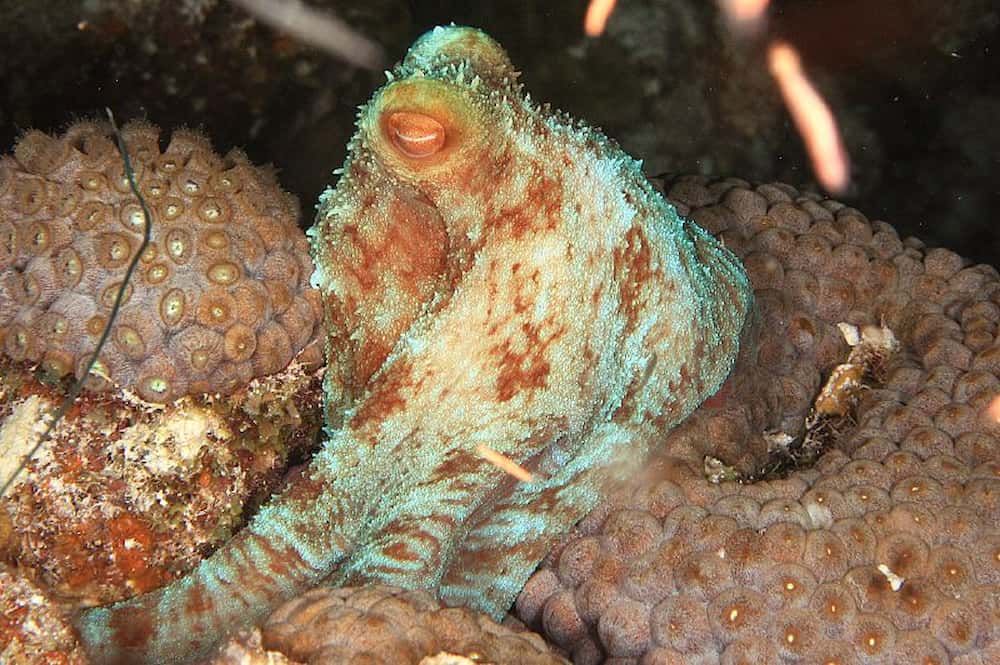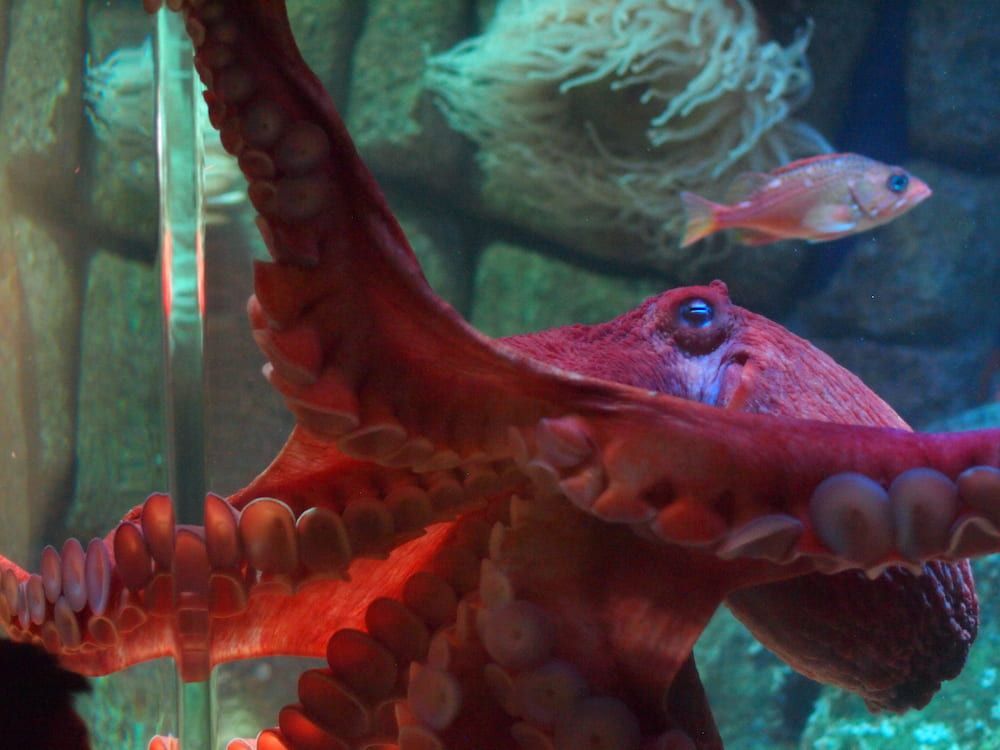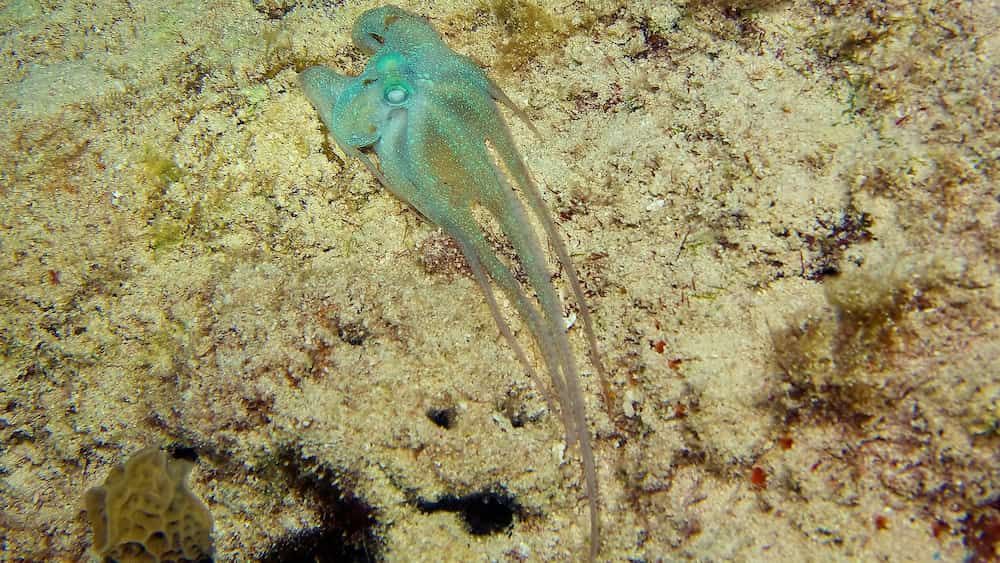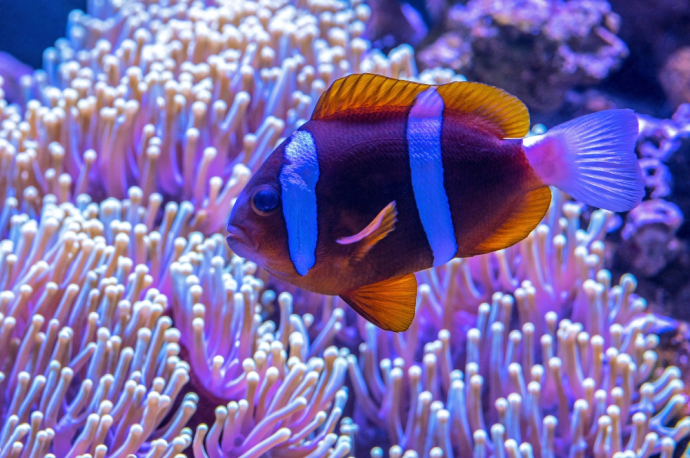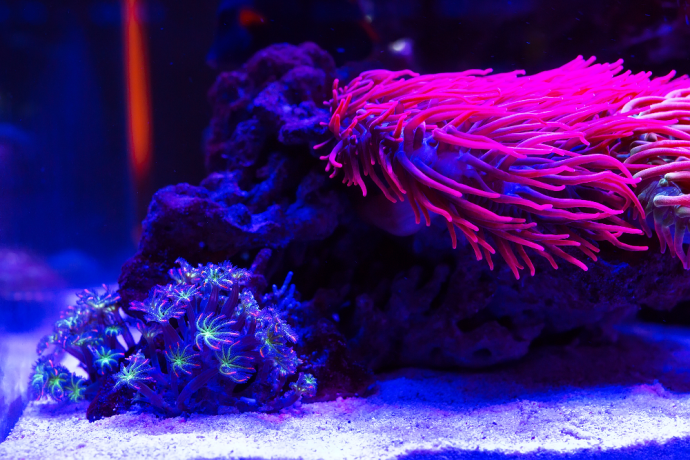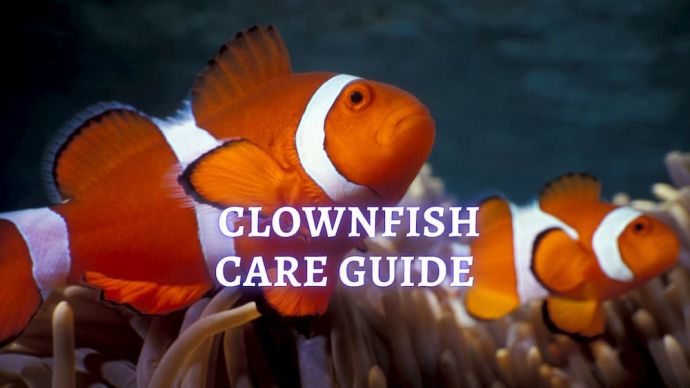Pet Octopus: Do Octopuses Make Good Pets?
Written by:
Author: Vicki Smirnova
Vicki Smirnova is a professional writer and editor who adores animals and helps readers get along well with their pets. She has been working in digital media for more than 5 years and has great experience writing content about lifestyle, including pets. Vicki specializes in dog health and nutrition, cat feeding, dog training. She is an aquarium lover and is passionate to write about fish care at home. Also, Vicki headed several websites and worked as a news editor.
View all 245 articlesLearn about our editorial process and veterinary review board.
Viewed: 734
Updated on: 01/18/2023
Animal psychologists consider octopuses the smartest of all invertebrates. These creatures are trainable, have a good memory, and can distinguish geometric shapes. They recognize people and get used to those who feed them. They are well-trained and even become tame. They can live in an aquarium and do not require much care. So, do octopuses make good pets?
Can I legally own an octopus tank?
An aquarium octopus is the most exotic pet, despite the massive variety of inhabitants of the aquatic world that are successfully kept at home. However, these representatives of cephalopods have some disadvantages, the main of which is an extremely short lifespan.
There are several different types of octopus available in specialty pet stores. Still, it would be best if you went to a reputable seller to avoid buying one of the dangerous and aggressive blue-ringed octopuses (Hapalochlaena) or a kind that grows very large.
For octopus keeping, one of the dwarf octopuses should be purchased: the California two-spotted (Octopus bimaculatus) or the Atlantic dwarf (Octopus joubini).
Important things to know about octopuses
Octopuses are mollusks belonging to the class of cephalopods, relatives of squid and cuttlefish. They have a framework of muscles that covers the internal organs and a jet propulsion system thanks to a structure called a siphon. A quick run of water through the siphon ensures the speed of movement. Since the shell of octopuses is entirely absent or reduced to minimal fragments in the mantle, they are very vulnerable; therefore, octopuses had to develop defense mechanisms to avoid predators. An example is the release of a cloud of “ink,” which can act as a smoke screen or as a distraction to distract a pursuing predator.
History of octopuses
Scientists cannot say exactly when the first pet octopuses appeared. Since they have no bones in their torso but only soft tissues, their body completely decomposes over time, leaving no traces. However, in Lebanon, scientists discovered the 95 million-year-old remains of a cephalopod, preserved inside the fossilized rocks of the soil. And what is most surprising, in terms of size and structure, the remains completely coincided with the living octopuses. This suggests that these creatures have not changed in any way over such a long time period. There are suggestions that the most ancient representatives of the octopus species had shells like those of snails, but this has not been proven.
Octopuses are the most numerous species of cephalopods. They are divided into two subspecies that differ in their way of life: nomadic and demersal: the former live in the same territory; the latter regularly move water in search of more favorable conditions. They are exclusively underwater creatures; they cannot live on land. Their upper shell needs constant moisture and quickly dries out in the air.
The structure of the octopus
Octopuses do not have a neck and body, so the tentacles grow directly from the oval head. The mouth is located in the center of the lower part, at the point of convergence of all limbs. The waste ejection hole is located behind the head. They have a membrane between their tentacles and from one to three rows of suckers, which are needed to keep prey away and prevent the octopus from sailing away. The octopus literally sucks food to itself and gradually moves it to its mouth.
Since their body does not contain bones, pet octopus can take on any shape. They can completely spread out along the bottom, like a piece of paper, or curl into a perfect ball. Most are pink-brown, but they can also change their color like chameleons, allowing them to merge with the environment and become invisible to other creatures. [1]
What do I need before bringing an octopus home?
Octopuses are expensive pets. The main disadvantages of keeping a pet octopus in a home aquarium are:
- Short lifespan – in most cases, octopuses live up to three years, and most often, the lifespan is up to one year.
- The desire to hide most of the time, so you have to wait for the opportunity to watch the pet.
- It is impossible to add fish or other aquatic inhabitants to the octopus’ tank, as they will be immediately eaten.
- The need to purchase a large aquarium and a powerful filter.
- Expensive live favorite octopus foods.
Feeding
It is feeding that is the main difficulty in keeping an octopus. These creatures feed on live shrimp, crabs, and marine fish. Over time, the octopus will be able to provide on defrosted shrimp and crab meat with the addition of live fish and shrimp. Many owners of these animals successfully use this hybrid feeding option.
Tank equipment
Particular attention should be paid to the tank’s choice and equipment for pet octopuses that live alone. A voracious pet can quickly feast on a small fish, and the presence of a large fish, even the most harmless, will lead to the fact that the timid octopus will always be in its shelter.
Tank size
You should purchase the most significant possible aquarium, with a volume of at least 80 gallons, so the pet can explore the territory and move freely. The larger the capacity, the easier it is for the pet octopus to remain in motion. There is no need to install specific equipment connected to keeping tropical fish, including ultraviolet filters, halogen lamps, etc. Octopuses need a simple but relatively powerful aquarium filter to purify the water, good octopus tank lighting, and a stable aquatic environment.
Water parameters
The water parameters that must be observed depend on the type of pet octopus. Before purchasing it, octopus keepers should find out everything in detail and collect as much information as possible from experienced breeders and sellers. The following indicators should be regulated – salt level, pH, and temperature. All species of octopuses are highly susceptible to changes in the aquatic environment, and the conditions in the aquarium must be kept as constant as possible. In addition, it is essential to ensure that nitrates and other chemicals, including those released during the decomposition of pieces of food, do not spoil the water, causing irreparable harm and even leading to the death of a pet.
READ MORE: How to Mix Saltwater for Aquarium?
Substrate
It is best to use soft, smooth, coarse sand or coral chips as a substrate. Shelters should be put in the aquarium so the octopus can hide; these shelters should be sturdy since a firm octopus can overturn an unstable structure and suffer.
Safe
By nature, this aquatic creatures is an extremely curious creature and is very clever at escaping. Therefore, it is always worth ensuring that the aquarium’s lid is heavy enough, equipped with a latch, or a strong mesh is fixed between the lid and the water surface. Be sure to block any pipes entering the aquarium with a mesh or sponge because the pet can slip through them. This rule applies even to the narrowest openings.
The octopus eats a lot to maintain its complex organism’s vitality and brain activity. Accordingly, they produce a lot of waste, which requires a powerful filtration system and regular water changes. In addition, it is worth buying a reverse osmosis unit to maximize the environmental parameters.
There should not be any metal parts or accessories in the water, as the octopus is very sensitive to these elements. Be sure to constantly saturate the water with oxygen, a high concentration of which is necessary for the pet’s good health.
The best way to get everything right is to equip the tank well before buying a pet. Experienced breeders recommend addressing this issue at least three months before settling an octopus. [2]
What octopus species can you keep as a pet?
An octopus living in an aquarium can safely be considered the most exotic pet, despite the massive variety of inhabitants of the aquatic world kept at home. While not all octopus species can survive indoors, several can be kept in an aquarium as a pet.
Common Octopus
Octopus Vulgaris is one of the most studied species and has a fairly high intelligence. These octopuses also have an excellent memory, are highly trainable, and can distinguish between people and geometric shapes.
This octopus is one of the most common and well-studied of the species. It can change color to match its environment. Its body length reaches 10 inches, and its life expectancy rarely exceeds three years, averaging 12-24 months. It is a solitary, territorial species and leads a benthic lifestyle, living among stones, rocks, and algae.
The common octopus easily adapts to life in captivity, which is why it is found in most public aquariums. It is not recommended for beginners and for experienced aquarists only!
Caribbean Reef Octopus
The Caribbean reef octopus (Octopus briareus) is a coral reef marine animal. It weighs about 3.3 pounds and has eight long limbs that vary in length and diameter. This species is difficult to describe, because, using specialized skin cells known as chromatophores, it changes color and texture to blend in with its environment. Its color range and texture is very large: from raspberry to green and uneven to smooth.
Caribbean dwarf octopus live in warm waters around coral reefs, as well as in grassy and rocky seas. Their biogeographic regions are: Nearctic region, Neotropical region (Central and South America), oceanic islands, and the Pacific Ocean. Therefore, you need to keep such pets in a marine-type aquarium.
The Caribbean reef octopus, like most other octopuses, is one of the most intelligent of all invertebrates. Its ability to remember where an enemy is – and then avoid it – is considered a feature of intelligence. Caribbean reef octopuses have been known to learn from each other, and some have disguised themselves as seaweed or coconuts in order to avoid detection by predators.
East Pacific Red Octopus
This octopus, which can grow up to 20 inches, is a universal predator that feeds on a large number of gastropods, bivalves and crabs. This species constantly changes its color, trying to merge with the environment. In an aquarium for such a pet, there must be many caves for refuge.
The hallmark of the East Pacific red octopus is its amazing intelligence. This pet will surprise you with its ability to solve problems and demonstrate remarkable short and long-term memory. They remember their owners and can distinguish people.
California Two-spot Octopus
The California two-spot octopus is naturally found in the Pacific Ocean, including off the coast of California, in both the US and Mexico. It is easily distinguished by two blue spots on its head. The color is monophonic; a large texture is not typical for the species.
The usual life expectancy is one to two years. Adult octopuses feed on mollusks, including bivalves and gastropods, as well as small crabs. This species is very popular as a pet.
Atlantic Pygmy Octopus
This is a small species of octopus; the adult’s growth reaches 1.8 inches, with tentacles up to 3.5 inches in length. They are known to be intelligent creatures with keen senses and particularly good eyesight. This species, like many others, has chromatophores, pigmented and light-reflecting cells in the skin that allow them to quickly change color and texture.
Atlantic pygmy octopuses live in the wild in the Atlantic Ocean, especially in the tropical waters of the Caribbean Sea and in the Gulf of Mexico. These pets love to hide in empty shells, jars or small holes, sealing the hole by combining sand and gravel to form a lid.
Can you have a wolfi octopus as a pet?
The smallest octopus in the world is octopus wolfi. It lives in the Pacific Ocean, off the coast of Japan, at a depth of 5-30 meters. The brain of the baby is well developed and has a rudimentary cortex, which is why octopuses are considered intellectuals among all cephalopods. The eyes are large compared to the body, which does not exceed 1 inch.
As you may have guessed, this pet does not need a large aquarium. The disadvantage of keeping this octopus is that, with a probability of 60%, the octopus will escape from its aquarium.
People Also Ask
Can you own an octopus as a pet?
Octopuses seem to be tempting pets. Unlike fish or even cats, they actually interact with us; they study us and react to our actions. And yet the octopus is a demanding animal. Before buying an exotic pet, weigh the pros and cons, consider your financial capabilities and make the right decision.
How much does a pet octopus cost?
Properly keeping a pet octopus is not a cheap venture. Prices range from $20 to $1,000—with the bulk of pet octopuses priced between $30 and $100. Octopus eat live prey—factor in another $100 per month to meet that need.
How long does a pet octopus live?
All species of octopuses have a very short lifespan. Small-sized animals live only 6-12 months after birth. Domestic octopuses live for about a year and; in rare cases, up to 3 years.
Article Sources:
- ”Octopus arms exhibit exceptional flexibility”, Published online 2020 Nov 30, ncbi.nlm.nih.gov/pmc/articles/PMC7704652/.
- ”Get to Know The Four Types of Cephalopods”, Posted on October 11, 2018, aquarium.ucsd.edu/blog/get-to-know-the-four-types-of-cephalopods/.
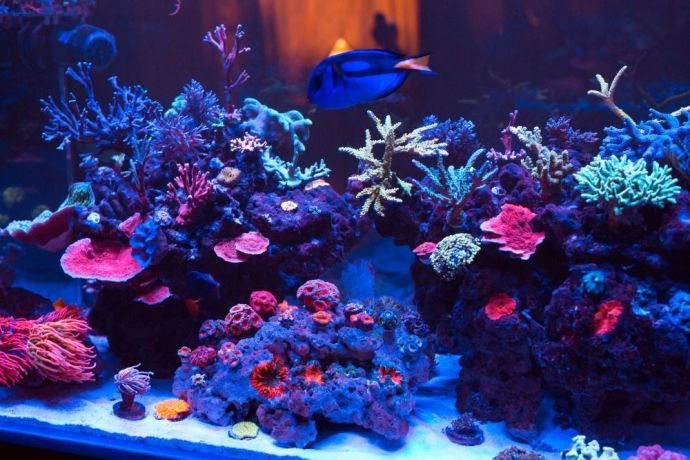 Fish Owners Tips Saltwater Refugiums: How to Make a Refugium for Saltwater Aquarium?
Fish Owners Tips Saltwater Refugiums: How to Make a Refugium for Saltwater Aquarium? - 735
- 0









